#afro-french culture
Explore tagged Tumblr posts
Text
white people are the same everywhere
#racism#aya nakamura#french singer#paris olympics#far-right#discrimination#racism investigation#cultural diversity#french culture#class prejudice#racial bias#afro-french culture#zouk music#cultural appropriation#racism in france#racial discrimination#social class#working-class#afro-caribbean#cultural heritage
13 notes
·
View notes
Text


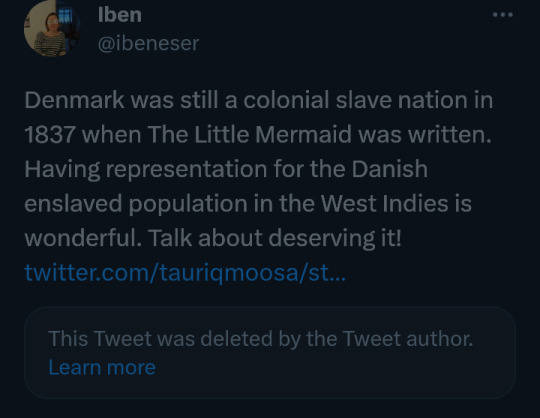




#tlm 2023#the little mermaid 2023#backlash#representation#french caribbean#dutch caribbean#black caribbean#afro caribbean#french colonialisn#dutch colonialism#tlm takes#pop culture#trinidad & tobago
7 notes
·
View notes
Text


Martinique Creole woman
#martinique#carribean#french#afro french#creole culture#creole people#beautiful#vintage#old photos#history#mixed culture#black culture
1 note
·
View note
Text
Once you call yourself a Negro, the scientifically written you out of existence. There is no land called Negro, no language or culture- Malcolm X

Right now, in this country, if you and I, 22 million African-Americans -- that's what we are -- Africans who are in America. You're nothing but Africans. Nothing but Africans. In fact, you'd get farther calling yourself African instead of Negro.

Black names don't exist, black land does not exist, black language does not exist. Human skin comes from the darkest brown to the lightest hues. We are Africans. African populations have the highest levels of genetic variation among all humans.- Khepri Neteru

By the early 1900s, nigger had become a pejorative word in the United States. In its stead, the term colored became the mainstream alternative to negro and its derived terms. After the American Civil Rights Movement, the terms colored and negrogave way to "black". Negro had superseded colored as the most polite word for African Americans at a time when black was considered more offensive.[126][failed verification] This term was accepted as normal, including by people classified as Negroes, until the later Civil Rights movement in the late 1960s. One well-known example is the use by Dr. Rev. Martin Luther King Jr. of "Negro" in his famous speech of 1963, I Have a Dream. During the American civil rights movement of the 1950s and 1960s, some African-American leaders in the United States, notably Malcolm X, objected to the word Negrobecause they associated it with the long history of slavery, segregation, and discrimination that treated African Americans as second-class citizens, or worse.[127] Malcolm X preferred Black to Negro, but later gradually abandoned that as well for Afro-American after leaving the Nation of Islam.[128]
Since the late 1960s, various other terms for African Americans have been more widespread in popular usage. Aside from black American, these include Afro-American (in use from the late 1960s to 1990) and African American (used in the United States to refer to Black Americans, people often referred to in the past as American Negroes).[129]
In the first 200 years that black people were in the United States, they primarily identified themselves by their specific ethnic group (closely allied to language) and not by skin color. Individuals identified themselves, for example, as Ashanti, Igbo, Bakongo, or Wolof. However, when the first captives were brought to the Americas, they were often combined with other groups from West Africa, and individual ethnic affiliations were not generally acknowledged by English colonists. In areas of the Upper South, different ethnic groups were brought together. This is significant as the captives came from a vast geographic region: the West African coastline stretching from Senegal to Angola and in some cases from the south-east coast such as Mozambique. A new African-American identity and culture was born that incorporated elements of the various ethnic groups and of European cultural heritage, resulting in fusions such as the Black church and African-American English. This new identity was based on provenance and slave status rather than membership in any one ethnic group.
By contrast, slave records from Louisiana show that the French and Spanish colonists recorded more complete identities of the West Africans, including ethnicities and given tribal names.
The U.S. racial or ethnic classification "black" refers to people with all possible kinds of skin pigmentation, from the darkest through to the very lightest skin colors, including albinos, if they are believed by others to have African ancestry (in any discernible percentage). There are also certain cultural traits associated with being "African American", a term used effectively as a synonym for "black person" within the United States

#african#afrakan#kemetic dreams#africans#brownskin#brown skin#afrakans#african culture#Malcolm x#african ancestry#igbo#ashanti#bakongo#americas#epic video#middle class negro documentary
277 notes
·
View notes
Text










Jab Jab, rooted in Grenada and Trinidad as Jab Molassie, is a cultural phenomenon with deep historical significance.
Jab Jab has ties to the pre-Lenten festivities in the French colonies, where the bourgeoisie donned lavish costumes and danced to the melodies of well-tuned orchestras. In stark contrast, the enslaved engaged in their own interpretation. They adorned themselves with cane ashes, oil, or grease and created music using improvised instruments like biscuit tins, oil drums, and conch shells. This was a form of satirical commentary.
The term "Jab" traces its origins to the French word "diable," meaning "devil." This signifies the subversive nature of Jab Jab culture, with masqueraders symbolically assuming the role of the devil, offering poignant commentary on colonial oppression.
Jab Jab, represented by individuals of African or Afro-Caribbean descent, features too distinct costumes with goat horns, thick chains, and symbolic artifacts. At the Notting Hill Carnival, these vibrant costumes come alive, celebrating the resilience and cultural pride of the Caribbean diaspora.
It's essential to note that Jab Jab's historical and cultural context has sometimes been misunderstood, leading to misinterpretations by right wing fanatics on Twitter (where else?). The complex themes and symbolism within Jab Jab culture provide a unique lens through which to view the Caribbean's rich history and heritage.
376 notes
·
View notes
Text
I think one of the things I appreciated the most about Nocturne was the protagonism on the Haitian Revolution.
This was a revolution that didn't just change Haiti, it changed the world. This was the revolution that would make the first black state. The first slaveless state. That would make every slave nation tremble with fear, from Europe To America to Asia to Oceania to Africa. It was what was never meant to happen, but did.
It's the nation that would defeat Napoleon and the British marine. Nobody could take down Haiti. You know why Napoleon went to colonize Europe? Haiti. That's why. He couldn't take down Haiti. Couldn't make it french territory again. So, he turned towards Europe.
We are talking about an undefeated nation.
AND! AND! A largely Vodu nation!
I was SO happy to see Vodu be portrayed as the wonderful religion it is, sacred and divinely intertwined with the Haitian revolution. The revolution was noted to start with Vodu chants and ritual.
White people refused to understand the link between the two worlds that could bring ancestors to meet their descendants. They created zombies as a horror trope. They made vodu dolls as a horror gimmick. They took a sacred religion and reduced it and vilanized it.
And I'm so happy to see it being positively portrayed in such a famous media. Vodu practicioners have already made media of the like. But I was positively surprised with what Nocturne had to present to us.
Of course, the knowledge that the french revolution was incomplete, that it was NOT FOR EVERYONE, is then again, something I really appreciate as a history student and a person. The french revolution killed mostly peasent and established the bourgeoisie, but did it end the Noir Code? No. Did it establish women's and black people's suffrage? No. Did it make a agrarian reform? No. Was it for the people? It had it's importance. But it was, at the very least, not for all the people.
And let's not forget that the french revolution's main intellectual current would birth biological racism, an unscientific current that claimed evidence of "different sized skulls" for example to prove humans possessed different races based on phenotypes.
Last, but certainly not least: it is absurd to see people claim that "all indigenous people have been killed". Acknowledging multi-ethnic indigenous genocide HAS to go along with the respect that there STILL are indigenous people and they continue their fight for their lives and land.
You know who the show demonstrates as such? Olrox.
While I don't appreciate the show claiming "all of his people were slaughtered" as that is historically inaccurate, I was most happy to see an Aztec vampire present and very alive, connected to his culture, protagonizing the show. The Nahua are still very much alive and kicking and I appreciated that the show took that into account.
And Annette! Sweet Annette being one of the leads makes me most joyful. I can't stand idiots that claim her presence.on France was """historically innacurate""", check again, dumbasses, free black people were all over France (especially the children of black Caribbean elites, for example, from Haiti back then known as Saint-Domingue, which did not possess universities and would sent their children to study in Europe.)
Anyway. To see her star as one of the leads made me so incredibly happy. She's a wonderful character and I appreciate how they let Annette be unapologetic and direct, especially during a moment between revolutions were she was very aware the french revolution didn't mean shit to her people.
But she was so lovely and to see her afro-caribean religion present AND source of her power made me emotional more than a few times.
Castlevania Nocturne really did hit this nail on the head.
Anyways. To make sure I give people answers to "but where's the evidence to x thing you said?" Here are my sources:
THYLEFORS, Markel; “Our Government is in Bwa Kayiman:”A Vodou Ceremony in 1791 and its Contemporary Significations, 2009
DUBOIS, Laurent; Avengers of the New World : the story of the Haitian Revolution, 2004
BUCK-MORSS, Susan; Hegel, Haiti and universal history, 2009
#Castlevania nocturne#Haitian revolution#French revolution#castlevania annette#richter belmont#castlevania netflix#maria renard#tera renard#castlevania edouard#olrox#castlevania olrox#castlevania spoilers#I'm just a history student who really likes Haitian history#and who's sick and tired to see people glorify the french revolution#like if you wanted a revolution that was truly liberating and radical and you know REVOLUTIONARY#the Haitian Revolution is RIGHT THERE#like HELLOOOOOO#and i'm so sick of seeing Vodu religion demonized#it's a beautiful religion and it shouldn't matter what you think of it#it deserves to be respected#we all have a responsibility in anti-racism and anti-religious oppression#so work
363 notes
·
View notes
Text
Haven't seen anyone talk ab it but Twin Drums studio (the majority of its core team of nine are Black, female, and queer) is developing a (successfully kickstarted!) Afro-fantasy game called The Wagadu Chronicles and I'm rly excited for its launch and you should check out their links
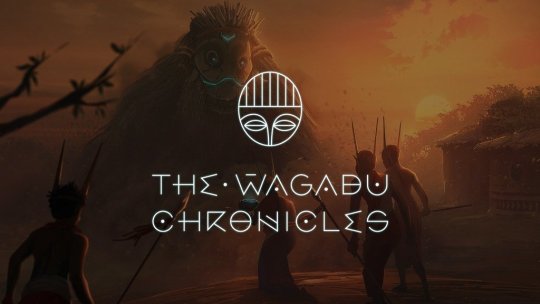

"This is a very personal project [...]" Twin Drums' founder and creative director Allan Cudicio explains. "For me, that meant looking back at my career realising how hard I had to fight just to get some Black characters in the games I was working on, or to get the artists to have an African-inspired setting and not the 40th European, French/Venetian inspired setting. It was very much a personal fight I had to go through."
"The game is political," Cudicio continued, describing the game as 'immersed in a Black, queer positive source'. "Too often we hear in our industry 'We don't do politics', which is fascinating. It's better to embrace what politics you have and for us it's anti-colonial, it's feminist, it's anti-ableist."
"[The Wagadu Chronicles] is an African-inspired fantasy sandbox MMORPG, so you travel through this African-inspired world, doing what you could call life skills: farming, fishing, crafting," Cudicio said. "It also has combat, mostly PVE, inspired by single player turn-based RPGs. Community is very important. Every village you see in The Wagadu Chronicles has been created, nurtured and expanded by communal efforts, which again is inspired by traditions of the continent. (x)

Wagadu removes the lens of medieval European influences in fantasy by being based entirely on African mythology. “A lot of games is nonconsensual killing and getting rewarded for it, whereas in Wagadu, and with nature, it’s about consent,” explains Cudicio. “That’s like traditional Yoruba hunters of the south of Nigeria. When they hunt, they chant a blessing and ask permission for the animal. In some cultures, you also ask for forgiveness or thank them afterwards. I think it’s important to rethink hunting not as something that’s very Western and capitalist — which is about the domination and destruction of nature — whereas in African societies it’s about balancing and respecting it.”
Suffice to say, being set in an African fantasy world also means players will only be able to play as Black characters, with a large selection of African names to choose from. “I know if people have that freedom, then white players will be lazy and just pick white people, and not challenge themselves, and then the setting will not be Black anymore,” says Cudicio. “To keep Wagadu African, there needs to be an artistic direction to say, like, this is a Black world, so everybody who plays has these features.” (x)
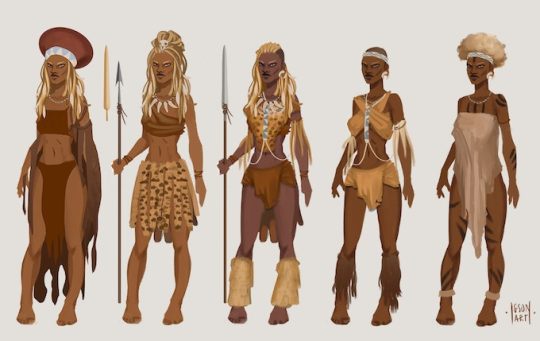
There have been black people in fantasy previous of course, but often their stripped of any tangible African influence. “I think what happens is you get very Western fantasy with people painted black, basically. There’s metal armour or a French looking knight, just with an afro or black skin. It’s good, it’s better than nothing, but we need to move a step further. It’s a very Eurocentric blackness.” (x)
#DOESN'T IT LOOK SO GOOD !!!!!#i'm surprised no one is promoting this yet :')#pcg#the wagadu chronicles#twin drums#pc games#video games#game development#game art#gaming#afrofantasy
365 notes
·
View notes
Text
Sources on Louisiana Voodoo
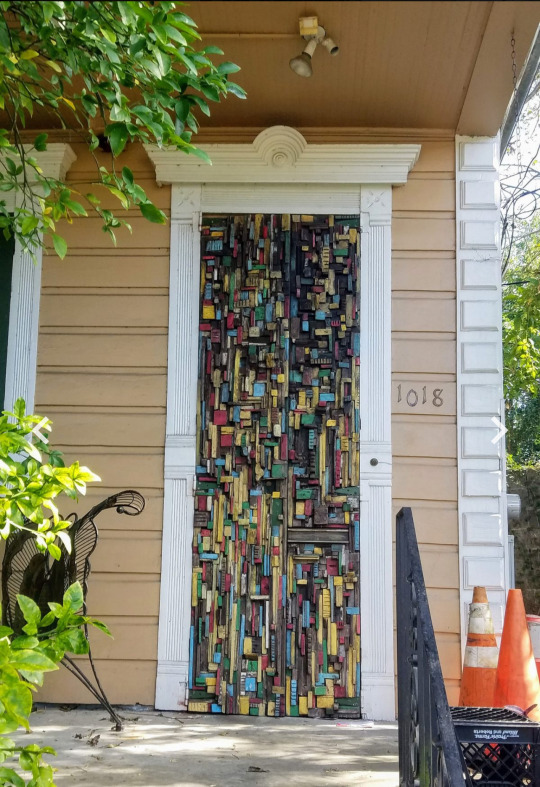
door in New Orleans by Jean-Marcel St. Jacques
For better or worse, (almost always downright wrong,) Louisiana Voodoo and Hoodoo are likely to come up in any depiction of the state of Louisiana. I’ve created a list of works on contemporary and historical Voodoo/Hoodoo for anyone who’d like to learn more about what this tradition is and is not (hint: it developed separately from Haitian Vodou which now is the most visible form of Voodoo present in NOLA) or would like to depict it in a non-stereotypical way. I’ve listed them in chronological order, and bolder those works I consider the best, many of which are primary sources. Please keep a few things in mind. Almost all sources presented unfortunately have their biases. As ethnographies Hurston’s work no longer represent best practices in Anthropology, and has been suspected of embellishment and sensationalism on this topic. Additionally, her portrayal is of the religion as it was nearly 100 years ago- all traditions change over time. Likewise, Teish is extremely valuable for providing an inside view into the practice, but certain views, as on Ancient Egypt, may be offensive now. I have chosen to include the non-academic works by Alvarado and Filan for the research on historical Voodoo they did with regards to the Federal Writer’s Project that is not readily accessible, HOWEVER, this is NOT a guide to teach you to practice this closed tradition, and again some of the opinions are suspect- DO NOT use sage, which is part of Native practice and destroys local environments. I do not support every view expressed, but think even when wrong these sources present something to be learned about the way we treat culture.
*To compare Louisiana Voodoo with other traditions see the chapter on Haitian Vodou in Creole Religions of the Caribbean by Olmos and Paravinsi-Gebert. Additionally, many songs and chants were originally in Louisiana Creole (different from the Louisiana French dialect), which is now severely endangered. You can study the language in Ti Liv Kreyol by Guillery-Chatman et. Al.
Le Petit Albert by Albertus Parvus Lucius (1706) grimoire widely circulated in France in the 18th century, brought to the colony & significantly impacted Hoodoo
Mules and Men by Zora Neale Hurston (1935)
Spirit World-Photographs & Journal: Pattern in the Expressive Folk Culture of Afro-American New Orleans by Michael P. Smith (1984)
Jambalaya: The Natural Woman's Book of Personal Charms and Practical Rituals by Luisah Teish (1985)
Eve’s Bayou (1997), film
Spiritual Merchants: Religion, Magic, and Commerce by Carolyn Morrow Long (2001)
A New Orleans Voodoo Priestess: The Legend and Reality of Marie Laveau by Carolyn Morrow Long (2006)
“Yoruba Influences on Haitian Vodou and New Orleans Voodoo” by Ina J. Fandrich (2007)
The New Orleans Voodoo Handbook by Kenaz Filan (2011)
“Why We Can’t Talk To You About Voodoo” by Brenda Marie Osbey (2011)
Mojo Workin': The Old African American Hoodoo System by Katrina Hazzard-Donald (2013)
The Tomb of Marie Laveau In St. Louis Cemetery No. 1 by Carolyn Morrow Long (2016)
Lemonade, visual album by Beyonce (2016)
How to Make Lemonade, book by Beyonce (2016)
“Work the Root: Black Feminism, Hoodoo Love Rituals, and Practices of Freedom” by Lyndsey Stewart (2017)
The Lemonade Reader edited by Kinitra D. Brooks and Kameelah L. Martin (2019)
The Magic of Marie Laveau by Denise Alvarado (2020)
In Our Mother’s Gardens (2021), documentary on Netflix, around 1 hour mark traditional offering to the ancestors by Dr. Zauditu-Selassie
“Playing the Bamboula” rhythm for honoring ancestors associated with historical Voodoo
Voodoo and Power: The Politics of Religion in New Orleans 1880-1940 by Kodi A. Roberts (2023)
The Marie Laveau Grimoire by Denise Alvarado (2024)
Voodoo: An African American Religion by Jeffrey E. Anderson (2024)
#I’ll continue to update as I find more sources#Please be respectful of other people’s religion#Louisiana Voodoo#In the case of authors behind a paywall or whom you do not wish to support I highly recommend your local library#Voodoo#some consider voodoo/hoodoo diff today but this may not always have been the case historically so they have been presented together here
72 notes
·
View notes
Text
Food fantasy diversity issue
Gotta put the word. I'm mad.
Food fantasy isn't the worst game about diversity and skin color... I know but.
It isn't the game with the best rep AT ALL.
You know, I love this game, I love the lore. But this doesn't mean I should be boot licking everything. I have the right to criticize and ask for improvement.
Let's start with the first issue. Skin color. The game of course has more east Asian and European food so it's natural that white skinned characters are the majority. However I noticed that more than half the design of the supposedly more tan or melanined characters are pale or ashey asf. I swear I know they are darker than the white white, but damn I'm as tan as them but I'm actually not tan and I'm white skinned. Artists, please stop being scared to color your character's skin with actual COLOR. Also almost all of them are white haired for some reason. I won't lie about the design some white haired were peak ( Ganache, Reuben, Tomahawk) but a lot of them only have white hair to make their skin appear darker. Also btw the excuse "yeah but you know that not all people of this country are dark skinned" is invalid. Ganache and Reuben are respectively French and United-Statizen. Both these countries are mainly white. So heh.
Ganache and Reuben


Second issue, the orientalism. When I see the dark skinned characters and especially the Middle East food souls, they are often portrayed wearing revealing clothes. If you do some research, it's very weird with their culture. "Yeah but the white characters also wear revealing clothes" Que Neni. If you compare the ratio, obviously dark skinned or just the tan ones are a lot more "fetishized". Always revealing their belly and for what ? Nothing because their outfits are based on fantasm and stereotyped views (belly dancer) about what the middle east looks like not the real traditional clothes which is a shame for a game about food diversity. Food eaten in Muslim countries for Ramadan wearing these ....
Knafeh and Shawarma the worst of them all


And third issue. A lot of them just don't have ethnic physical features. I can understand that this clashes with the artist's art style but I swear it's not that difficult to draw curly and kinky hair. You know it's not that hard to download brush on CSP. Brushes that help you to draw afro hair style.
This food IS FROM ZAMBIA but man looks like a Middle East/American native. Not African from Zambia.

And this is the end of my rant.
"the game company is Asian that's why they don't add a lot of diversity." First research, second, Dislyte, Pokemon both are Asian companies with rad black and poc design. Excuse refused. Don't try to justify culture erasure even if it's not done with a malicious intent. ( And Hoyoverse is NOT a role model. Being better than hoyo at skin diversity isn't a feat. It's the bare minimum)
And yes maybe I'm just a hater "You should just go play another game if you are just gonna hate", man. The bar is so low that I can't even wish for improvement for a game that was my first Gacha Game and a part of my teenage years ?? If you thought like everything I wrote between the quotation marks, I urge you to broaden your horizon and learn about these often misrepresented cultures.
Bye
35 notes
·
View notes
Note
Hi! I am currently learners French and I was wondering if you have any tips or something to help 😭😭😭
Hellooo! Learning french for me was definitely an uphill battle and I would say the type of thing that gets harder before it gets easier. Just for context on my personal situation learning French: I took french all the way through high school, studied super duper hard for the B2 exam and then managed to pass. It was through this that I was able to apply to french universities and got accepted at Sorbonne University where ALL my courses are french. Being at a french school, having to read advanced texts practically every day, and of course living in Paris - I reached C1 (and this took me about a year and a half). Please take this into consideration in terms of setting realistic goals for yourself. Here are my tips for fluency:
1.) Read A LOT!!! Through reading you’ll be able to see french grammar in context, the general structure of the language, figures of speech, and of course expand vocabulary. It goes without saying that learning a language is learning a culture - there are many faucets of francophone culture expressed through literature which provide helpful insight for non francophones. Here are my recommendations according to language level.
Beginner (A1-A2)
Le Petit Prince d’Antoine de Saint-Exupéry - this is a stable of french culture and very simple children’s novella to read. A book every French child has read.
Le Petit Nicolas - another children’s book which I think gives really good insight into french upbringing, and primary school experience. I found it to be a stark contrast from anything that I had experienced.
Any thing from Français Facile, as you reach A2 the focus will be more on basic grammar and I find those books to be quite good in terms of the hyper specificity that requires, ie if you’re learning imparfait vs passé composé there is probably a book tailor made for that.
Intermediate (B1-B2):
French translation of originally [insert your first language]. I know this may seem strange, but I think it’s a helpful in between step to see how your language translates into french, and I found generally it was easier to read weirdly?? (As someone who was reading a lot of English to French translations, guess is that since the translation is limited to English lexicon which is smaller than french, the translation itself would be a much simpler version of french lol). This can be any book, as long as it’s at your reading level in your native tongue
L’étranger d’Albert Camus
Le peintre de la vie moderne de Charles Baudelaire
Manette Salomon des frères Goncourt
Magazines, newspapers, journals!! Again great insight into francophone culture and current affairs.
At B2 level you should be able to read anything, so anything you can get your hands on, READ!
2.) Study the grammar. Get it down. All the laborious things (gender of nouns, use of subjonctif, conditional tense, COD/COI, etc, etc) — learn it and master. This cannot be skipped, you cannot cut corners in this regard. Put your head down and do it.
3.) Once you’ve gotten to A2/B1 — speak as much as possible. If there are conversation classes available, go to them. Try to find people online to practice with if IRL is not an option but it is important to practice speaking.
4.) Listen to French music, watch french language films. There’s french music in all genres and music taste is super subjective lol. I personally love the music from the 60s/70s - Jacques Brel, Serge Gains, Jane B, Francoise Hardy, Michel Legrand, Barbara (my recommendations lol). Of course if you’re not into that there’s pop, rap, Afro beats, classical, etc., etc. My favourite french films are Cléo 5 à 7, La Piscine, Le Samouraï, Les demoiselle de Rochefort, La Religieuse, La Chinoise, Plein Soleil— just a few that come to mind. Of course taste is super subjective, so just find what you like!
There are all my tips for learning french (or really any language). Hope it was helpful!!
28 notes
·
View notes
Text
𝐒𝐇𝐄𝐀 𝐁𝐔𝐓𝐓𝐄𝐑, megumi fushiguro
WARNINGS - black!reader, f!reader, oral sex, teasing, 18+ characters. for the black girlies but readers of all ethnicities are welcome to enjoy!
a/n - my first time writing in this fandom. sumn for me to get used to, so i started off easy. lmk how u guys like it, & if u want more!

ִ ࣪𖤐༄
“I love when you do this in the morning.” Your soft voice tumbled out of your lips.
Megumi was rough around the edges, tender at the core. The world saw a stoic, bothered man, but with you, Megumi was everything soft and sweet.
You wore a white, french-styled lace bralette, and a thong to match. Your stomach was flat on the white silk linen, one cheek set on the silken pillowcase. Petals of carnations and roses were adorned around your body. Lavender candle, crackling and dripping molten wax on the nightstand.
Just because he wanted to.
The morning was an invitation to become agents of dreams and loving actions. Rays of sunlight doused your room with pools of amber and gold. The gust through the windows gracefully lifted the curtains as a gift of freshness. The sky was a blend of smudged stars, argent, and ivory clouds that flowed across the sky in the form of broken verses.
“I know you do.” Megumi’s hand’s, lathered in thick shea butter, pressed from your lower back, up to your shoulder blades. His fingers splayed firmly as he did so, compressing deep-seated passion into your well-melanated flesh.
Megumi was all for helping you unravel into your feminine and romantic persona. He was aware that the world was misogynistic and dominated by the patriarchy, with little to no concern of minorities— such as black women. He was invested in caring for you, helping you on wash days, buying some of your favorite hair and skin care, reading some of Maya Angelou’s poetry with you. He wasn’t afraid to embrace and delve into your culture.
There was no way he was going to love a woman without embracing her full being. Who she was, where she came from, what she experiences, why she interacts with the world the way she does, how such an epitome can exist at the same time as her. He made it his daily and utmost duty to care for you, even when it was hard to, even when it hurt.
Megumi kneaded his strong hands on the expanse of your shoulders, letting out a breath as he lined your figure with his touch. Hips patterned with marks that showed the capacity of a woman to grow and change. Curves and dips to show that you are a muse, a piece of art not to be reckoned with. Childhood scars, birthmarks, hyperpigmentation.
He loved you in full.
“Your skin, it’s so, so gorgeous.” He watches the butter pave paths of rich oil and glisten on your arms.
You let out a soft noise of delight, “Thank you, Megumi.”
Megumi gathers more of the raw extract and slips his hands down the back of your thighs, going down, then up, right below your behind.
Megumi’s voice, commanding, “Open up a little for me, angel.”
You spread your legs a bit, then Megumi dips his hands between your inner thighs. You contort a bit as his grasp reaches a sensitive cluster of nerves. Then his hands return to the outer thighs, then up the spine again.
Megumi progresses, smoothing his hand over your afro-textured hair that was concealing your face. The curls are gravity-defying and abundant. Your hair stands proud to Megumi’s touch, and he smiles. He always loved how strong-willed your hair appeared, it was just like you.
He peppers delicate, deep and languid kisses on the slope of your neck. Megumi’s lips wander to the terrain of your back. He kissed, sucked there. Dragged his hand on your hip, held the hip in place.
Megumi was following up his hand massage with a series of radiant kisses. Down the spine that bound the body of a plethora of dark and hidden mysteries. His hands ran across the shape of some more of your figure as he continued to press his lips on areas of your body.
You closed your eyes. Listened to his kisses growing hotter as they neared your thighs. Heard the quickening breath he was breathing. Feeling his touch start to lose focus.
It was all happening slowly but surely, but you were going to wait until Megumi said something.
You knew within yourself, you were a cascade of sensations and a symphony of desire.
Way before the shea butter.
There it was.
Urgent, but expected.
He paused.
Whispered. Tone covered in imperfect lust.
“Sweetheart, do me a favor,” The urge was welling up from his depths this time around. This was one of the times you knew there was a second part to the morning routine.
“Bend your back ‘nd let me eat you.”
“I was waiting to hear you say that,” You smiled, getting on all fours, “It’s one of those mornings, isn’t it, babe?”
Megumi sighed as your back formed into an arch, “Think so. We gon’ find out.”
Megumi slipped off the thong, put it aside. Clapped his hand on your ass, squeezed it, making you squeal.
“I’mma eat you out as a starter,” He lines his fingers just above your folds, semi-soaked in arousal. “Pussy’s prettier than the last time I left her.”
Megumi felt the adrenaline ebbing his body as he wiped his tongue on a piece of Heaven between your thighs. Your teeth clench, you brace your body for the cunnilingus.
His oral performance. You were the stage, and he was the show.
Megumi traced detailed circles on your oil-spread lower back and thigh. “Flinchin’ already, angel? I taught you better than that.”
You husked, “Megumi, please don’t tease me. Not this time.”
“There’s never gonna be a time where I don’t tease you, sweet girl.” Megumi gave your umber pussy lips crude, salacious sucks, drawing a whine from you.
Your pussy was like the petals of a flower. Blossoming with an itch only he could scratch. Every interstice and layer was asymmetrical. Seeping with nectar as he paid homage to your special place.
He licked his middle and ring fingers, then dipped them in your essence, feeling the rosé interiors close around him.
There was no pretense, his pulls and pushes were as hot as fire. Raging fire. He gives that coral pink clit, so solitary and vain, the most obscene suckle he could manage. Your composure was wilting. He’s licking, fingering, pulling taut, thrusting deep, making you elementally vulnerable to expanding and contracting. To Megumi, you were sweet succulent fruit and shooting stars.
“Fuck, Megumi— Fuck.” You were slipping up now, the words in your mouth were hoarse. Your legs contract together when you feel his fingers strike a nest of nerves and a deep corner.
Megumi spanned his touch down your shea-buttered back just one more time. He loved the slip. He loved the soothing. He loved the sex.
Megumi laughed as he submerged himself in saturated, vulva flesh. His ultraviolet tongue with dust of gold. “You found your words, princess.”
Megumi knew you always had your guard up, and that you always felt like your emotions had to walk on eggshells. Again, Megumi was always ready to be that place for you to take off the armor, and land and unravel.
Megumi was relentless. Ate some more from those secret lips. Curled his fingers in your honeyed abyss, put his wrist in it. Slapped your ass again ‘cuz he knew you liked it like that. Sweet as fuck— was his sticky, hot whisper. You were craving an orgasm at the core, and were reduced to a lack of self control.
You wondered if your bones should break.
You winced, feeling the rip currents of his desire split through you. “Yes, God, fuck.”
Megumi was a hound of lust, his growls were the lightning and your moans were the thunder.
His hands, slick with shea, dirty with you. He deepens your arch by pressing down on your back. Tongue busy, fingers sodden. “Mhm, that’s my girl. Talk me through it.”
Your mouth, clustered with buttered prose. Your hands twining around the linen. Teeth biting down on the pillow. The tremors make you feel dark and twisted. You’re blending hot curves and mystic chimes of the tongue.
You shrill into the pillow, feeling the chronic ache birth at your spoiled-rotten core, “Megumi! You’re so deep— Oh, God, please.”
He asked, voice grated, "Am I?"
"Yes," You whine, the tension is building pressure inside of your mind. "You are, and I'm on the way."
He knew when it was coming. He watched for your legs to lock like steel. Watched the dark tawny palace between your legs breathe with ready alabaster. Listened to your breath snag with a curse. Observed the convulsion of energy from the zenith of the spine to the nadir of the same.
“Cum for me, angel. I’m a keeper.”
He knew when it was coming. He watched for your legs to lock like steel. Watched the dark tawny palace between your legs breathe with ready alabaster. Listened to your breath snag with a curse. Observed the convulsion of energy from the zenith of the spine to the nadir of the same.
Your chasm drenched and released, flowed with ivory. You dissolve in ripe sounds of delight. You were served to him hot.
There she is, I knew you had it in you, angel, he praises.
You were light and fluffy, he takes your buttery-rich residue, hums when he gets a flavor. Spits between the folds to gather more.
He opens your mouth with his fingers, pushes them down gently.
His brusque instruction. “Suck,” And you do with a soft groan.
His jade eyes contrast with your almond, he deepens his fingers a bit. It makes your stomach crunch
“Atta girl,” Megumi kisses your full lips with care. "Did you enjoy your morning?”
You said, tone ragged from sex. “Yes, I did. Good Lord, can you eat pussy good.”
there it was
the flavor of you still marinating on his tongue
and
the golden threads of light and
the crisp breeze
ruffled amongst the linen and rose petals
lavender candle still sputtering
and creamed, lavish butter
spilled from your sacred canvas
and down your thighs

#jujutsu megumi#jujutsu kaisen#jujustsu kaisen x reader#megumi x reader#megumi smut#megumi x reader smut#jujutsu kaisen smut#jjk x you#jj x reader#megumix x black!reader
154 notes
·
View notes
Text

decided to try doodling with a chisel pen and it turned out pretty well!
feat. characters from a still-unnamed linkverse au i'm working on. rambles about that below the cut for anyone interested
edit-- tags are now updated :) you can find the comic here!
characters--
traveler-- this au's hyrule equivalent. he's from calatia (i'm reskinning the loz 2 map to be calatia) and his best friend is princess seline. she's the one he's talking about here lol. calatia is a multi-ethnic country like hyrule, traveler and his family are based on a mix of yoruban culture and western black african movements (i pulled inspo specifically from the french afro-punk movement)
bim-- traveler's fairy companion! one of his other best friends, and his sister
tetra-- tetra
sailor-- this au's wind equivalent. he and tetra are pirates in the great sea, which will be located south of hyrule, and he's from the ethnic group that also lives in lurelin
pinky-- this au's legend equivalent. he's an apple farmer who recently visited holodrum and labrynna and was rescued off of a half-broken raft by tetra and sailor for no major reason whatsoever :)
check out my first post here if you're interested in reading more about this au!
#legend of zelda#loz#i also didnt do any sketching for this thing#because why not i guess#turned out pretty well all things considered#fractured courage#fcau traveler#fcau sailor#fcau pinky#fcau tetra
68 notes
·
View notes
Text
Good Stuff: Primos

It was the summer of 2023. We got the opening to Disney's new cartoon. Then it was bullied into releasing next year. Primos is one of those cases where culturally, you could smell the Americana from it in spite of intentions, and when you get around to it the hate wasn't fully deserved. It was funny, but to me this was like if Japanese Americans shitted on Dragon Ball Z for characters being named after veggies. Then again, nobody hates shit harder than Mexicans and Latinos and the PR wasn't the best, Tater's VA definitely didn't help. But, I'm grateful Disney didn't pull a Zaslav and shelf this as if this was the damnedest thing to ever happen to Hispanics. Now that the wait is over, is the show good?

it's far better than Latinx Loud House Cleveland Show, credit where due
The comparison to Loud House/Casagrandes isn't far off, but Primos has the advantage of it feeling like the time Tater spends with her extended family will have a start and end to it. We're in the same headspace as Latka who's not only adapting but revaluing her perspectives regarding her family. Nothing groundbreaking, but reminds me of Clarence where it has that messier but more homey charm as opposed to Loud House where over time it felt too plain and overstayed its welcome. Primos I feel will work as a limited season show like Gravity Falls as you can see well paced progress with both Spud's self-discovery mission and her familial relationships to not too overstay as if it needed to be Disney's answer to Loud House. I overall appreciate DTVA for looking to do less inherently story heavy shows.

We could've had a Katz Cafe too, Disney
Now to get a tad personal, I am Mexican American (Afro-Hispanic specifically) and I can relate to Tuber to a minor extent, given this is based on the creator's own life. Primos doesn't really hit those deep cuts though when despite the heritage I bear, making your show about growing up a gringo or gabacho is not a mirroring experience I'm that into watching. This show isn't like Victor and Valentino or the Puss in Boots cartoon where its representation is purely into its core elements like the folklore and presentation. It's more akin to saying you proudly grew up on Del Taco joints and the ability to grasp subtitles. This is more Disney's overall ethnocentric MO when it comes to other cultures: more for those who want to feel aware than anyone that lived or is living it. I'm not here to chastise Natasha's authenticity in producing this nor act like this is a very patronizing kids cartoon. I'm just saying relatability only goes so far here and we otherwise have a very okay cartoon that had intentions on a perspective we're well aware.

And c'mon, nothing has overthrown the GOAT
Again, I appreciate the small shift to more episodic and grounded shows as opposed to serial adventures to keep track off. While not unique, Primos has a sweet blend of comical and comforting to be worth a watch. French Fry is an enjoyable protag (while Nellie is better) among a good, less archetypal family that overall makes episodes feel as easy-going as Kiff. I won't pretend to say I hated this originally nor did I ever hold any resentment to say this doesn't now deserves more of a chance.

7 Out Of 10, like your average stoner trip to Taco Bell
15 notes
·
View notes
Text
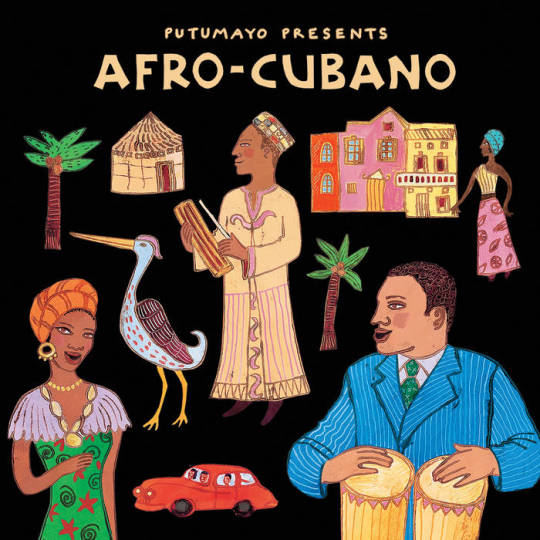
Music of African heritage in Cuba derives from the musical traditions of the many ethnic groups from different parts of West and Central Africa that were brought to Cuba as slaves between the 16th and 19th centuries. Members of some of these groups formed their own ethnic associations or cabildos, in which cultural traditions were conserved, including musical ones. Music of African heritage, along with considerable Iberian (Spanish) musical elements, forms the fulcrum of Cuban music.
Much of this music is associated with traditional African religion – Lucumi, Palo, and others – and preserves the languages formerly used in the African homelands. The music is passed on by oral tradition and is often performed in private gatherings difficult for outsiders to access. Lacking melodic instruments, the music instead features polyrhythmic percussion, voice (call-and-response), and dance. As with other musically renowned New World nations such as the United States, Brazil and Jamaica, Cuban music represents a profound African musical heritage.

Clearly, the origin of African groups in Cuba is due to the island's long history of slavery. Compared to the USA, slavery started in Cuba much earlier and continued for decades afterwards. Cuba was the last country in the Americas to abolish the importation of slaves, and the second last to free the slaves. In 1807 the British Parliament outlawed slavery, and from then on the British Navy acted to intercept Portuguese and Spanish slave ships. By 1860 the trade with Cuba was almost extinguished; the last slave ship to Cuba was in 1873. The abolition of slavery was announced by the Spanish Crown in 1880, and put into effect in 1886. Two years later, Brazil abolished slavery.
Although the exact number of slaves from each African culture will never be known, most came from one of these groups, which are listed in rough order of their cultural impact in Cuba:
The Congolese from the Congo Basin and SW Africa. Many ethnic groups were involved, all called Congos in Cuba. Their religion is called Palo. Probably the most numerous group, with a huge influence on Cuban music.
The Oyó or Yoruba from modern Nigeria, known in Cuba as Lucumí. Their religion is known as Regla de Ocha (roughly, 'the way of the spirits') and its syncretic version is known as Santería. Culturally of great significance.
The Kalabars from the Southeastern part of Nigeria and also in some part of Cameroon, whom were taken from the Bight of Biafra. These sub Igbo and Ijaw groups are known in Cuba as Carabali,and their religious organization as Abakuá. The street name for them in Cuba was Ñáñigos.
The Dahomey, from Benin. They were the Fon, known as Arará in Cuba. The Dahomeys were a powerful group who practised human sacrifice and slavery long before Europeans arrived, and allegedly even more so during the Atlantic slave trade.
Haiti immigrants to Cuba arrived at various times up to the present day. Leaving aside the French, who also came, the Africans from Haiti were a mixture of groups who usually spoke creolized French: and religion was known as vodú.
From part of modern Liberia and Côte d'Ivoire came the Gangá.
Senegambian people (Senegal, the Gambia), but including many brought from Sudan by the Arab slavers, were known by a catch-all word: Mandinga. The famous musical phrase Kikiribu Mandinga! refers to them.
Subsequent organization
The roots of most Afro-Cuban musical forms lie in the cabildos, self-organized social clubs for the African slaves, and separate cabildos for separate cultures. The cabildos were formed mainly from four groups: the Yoruba (the Lucumi in Cuba); the Congolese (Palo in Cuba); Dahomey (the Fon or Arará). Other cultures were undoubtedly present, more even than listed above, but in smaller numbers, and they did not leave such a distinctive presence.
Cabildos preserved African cultural traditions, even after the abolition of slavery in 1886. At the same time, African religions were transmitted from generation to generation throughout Cuba, Haiti, other islands and Brazil. These religions, which had a similar but not identical structure, were known as Lucumi or Regla de Ocha if they derived from the Yoruba, Palo from Central Africa, Vodú from Haiti, and so on. The term Santería was first introduced to account for the way African spirits were joined to Catholic saints, especially by people who were both baptized and initiated, and so were genuine members of both groups. Outsiders picked up the word and have tended to use it somewhat indiscriminately. It has become a kind of catch-all word, rather like salsa in music.
The ñáñigos in Cuba or Carabali in their secret Abakuá societies, were one of the most terrifying groups; even other blacks were afraid of them:
Girl, don't tell me about the ñáñigos! They were bad. The carabali was evil down to his guts. And the ñáñigos from back in the day when I was a chick, weren't like the ones today... they kept their secret, like in Africa.
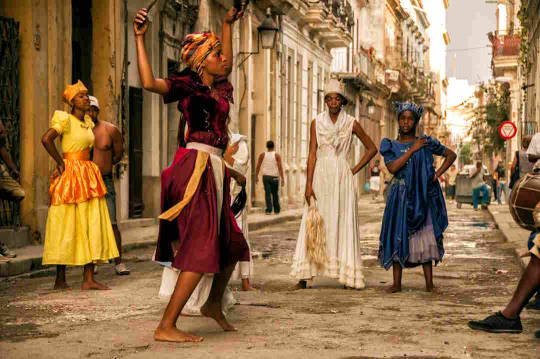
African sacred music in Cuba
All these African cultures had musical traditions, which survive erratically to the present day, not always in detail, but in the general style. The best preserved are the African polytheistic religions, where, in Cuba at least, the instruments, the language, the chants, the dances and their interpretations are quite well preserved. In few or no other American countries are the religious ceremonies conducted in the old language(s) of Africa, as they are at least in Lucumí ceremonies, though of course, back in Africa the language has moved on. What unifies all genuine forms of African music is the unity of polyrhythmic percussion, voice (call-and-response) and dance in well-defined social settings, and the absence of melodic instruments of an Arabic or European kind.
Not until after the Second World War do we find detailed printed descriptions or recordings of African sacred music in Cuba. Inside the cults, music, song, dance and ceremony were (and still are) learnt by heart by means of demonstration, including such ceremonial procedures conducted in an African language. The experiences were private to the initiated, until the work of the ethnologist Fernando Ortíz, who devoted a large part of his life to investigating the influence of African culture in Cuba. The first detailed transcription of percussion, song and chants are to be found in his great works.
There are now many recordings offering a selection of pieces in praise of, or prayers to, the orishas. Much of the ceremonial procedures are still hidden from the eyes of outsiders, though some descriptions in words exist.
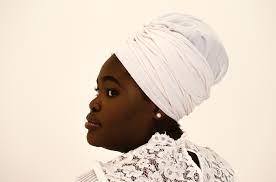
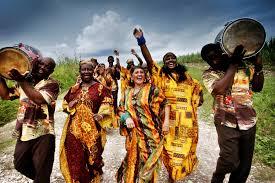
Yoruba and Congolese rituals
Main articles: Yoruba people, Lucumi religion, Kongo people, Palo (religion), and Batá
Religious traditions of African origin have survived in Cuba, and are the basis of ritual music, song and dance quite distinct from the secular music and dance. The religion of Yoruban origin is known as Lucumí or Regla de Ocha; the religion of Congolese origin is known as Palo, as in palos del monte.[11] There are also, in the Oriente region, forms of Haitian ritual together with its own instruments and music.
In Lucumi ceremonies, consecrated batá drums are played at ceremonies, and gourd ensembles called abwe. In the 1950s, a collection of Havana-area batá drummers called Santero helped bring Lucumí styles into mainstream Cuban music, while artists like Mezcla, with the lucumí singer Lázaro Ros, melded the style with other forms, including zouk.
The Congo cabildo uses yuka drums, as well as gallos (a form of song contest), makuta and mani dances. The latter is related to the Brazilian martial dance capoeira
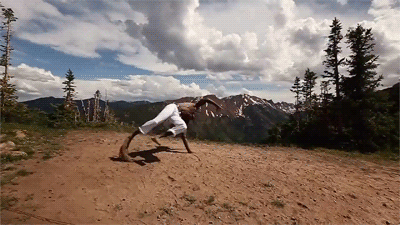
#african#afrakan#kemetic dreams#africans#brownskin#brown skin#afrakans#african culture#fitness#afrakan spirituality#afro cuban music#afro cuban#igbo#yoruba#congo#african music
195 notes
·
View notes
Note
[Huey Zoomer anon]
The Left: I want to show more black people in history
Me: Okay!
The Left: *Proceed to bastardized history with a Marxist oppressed vs oppressors mindset and refuse to actually use actual African Civilizations properly*
AAAAAAAAAAAAAAAH!
Also like the black Roman thing….hmmm do people mean like North African and MENA provinces where naturally west Africans would show up
Or are they trying to pretend that people of black descent would live in Roma and the Italia peninsula?
Also the black supremacy thing, where black characters can act like Victorian sociopaths because they were oppressed in the past
Don’t get me started on the renewal blood and soil arguments thanks to the Decolonial theory
Also why just more black people in historical eras? Why not show off the ancient Indian merchant (we found Hindu artifacts in ancient Egypt and even the infamous Pompeii dig sites)
Or make the “invisible Jews” more present as they were there
Actually AC origins was the first games I notice the proper cultural exchange between the Levantines and Egyptians
And this weapon from the game https://assassinscreed.fandom.com/wiki/Canaanite_Blade
Wait the Jews were known for their ferocity? *Glance at Hollywood portrayal of Jews and stereotypes of jews* that new, perhaps I can fun NON BIBLICAL and non holocaust focus books about Jewish people more
Hmm, I told this to Nunya in the dms, but what about a video game or two set about the unification of Israel under Saul and David? Not saying from this franchise. But I was thinking like similar to the recent AC rpg games like Valhalla and Odyssey. Mossad can kill me for this but hey
Prologue David as a youth: Baby boy (sorry he was the youngest of 8, the baby fat on his face must been strong af)
David after killing Goliath and his exile: Traumatized baby boy
Fully grow adult David after got his beard: Conquerer daddy
Hmm, have Israelites found any ancient breastplates? Might play with the Judah Tribe Lion Motif with David designs a lot.
Sorry for my rambling…despite being progressive, I think we regress back to 60’s representation with a woke hat
Or are they trying to pretend that people of black descent would live in Roma and the Italia peninsula?
Septimius Severus Roman emperor from 193 to 211. From current year Lybia, there's debate™ about him.

Black people in ancient Roman history - Wikipedia The Romans didn't really have a concept of black or white only roman or not roman, kinda like how the French have been trying to do it for a long time.
Also the black supremacy thing, where black characters can act like Victorian sociopaths because they were oppressed in the past
You can say Killmonger it's ok
Also why just more black people in historical eras? Why not show off the ancient Indian merchant (we found Hindu artifacts in ancient Egypt and even the infamous Pompeii dig sites) Or make the “invisible Jews” more present as they were there
Both would be nice, be interesting to get something going into where the afro iranians came from (same place African Americans came from, same reason too) but there were also traders and others that likely set up shop all over the land mass that makes up the "old world"
Small Jewish community in China been there for a long time, there's some debate about how long but even the most conservative estimates put it at over 800 years.
Actually AC origins was the first games I notice the proper cultural exchange between the Levantines and Egyptians
The Egyptians may have looked down on shepherds, but they still needed that wool at times.
Wait the Jews were known for their ferocity? *Glance at Hollywood portrayal of Jews and stereotypes of jews* that new, perhaps I can fun NON BIBLICAL and non holocaust focus books about Jewish people more
Fiddler on the Roof is good if you're looking for a Musical.
Hmm, I told this to Nunya in the dms, but what about a video game or two set about the unification of Israel under Saul and David? Not saying from this franchise. But I was thinking like similar to the recent AC rpg games like Valhalla and Odyssey. Mossad can kill me for this but hey
could be fun, could also be a minefield
Fully grow adult David after got his beard: Conquerer daddy
We could probably skip calling him that
Hmm, have Israelites found any ancient breastplates? Might play with the Judah Tribe Lion Motif with David designs a lot.
Resources on ancient Jewish armor? Reddit Brain Trust on r/ArmsandArmor has this and skimming it I'm going with probably not, looking around I'm seeing one place calling the garments the High Priest wore including the Breastplate with "the name" written on it listed as armor.
In fairness it was supposed to keep him from getting killed, just not by soldiers.
Found this too, easy enough to pick out the eras even if you can't totally read what it says, first 2 are Saul next is Davidic then Maccabean, and the last two are Herodian.

You'd have to look up what passes for a coat of arms for the different families to go past that. This looks like a fairly well accepted collection of what they crests are though
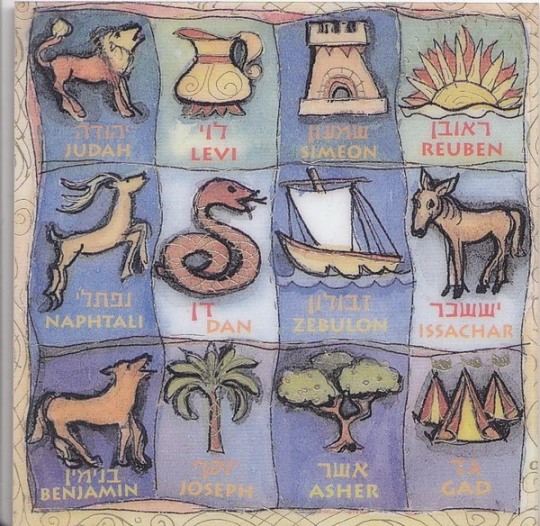
Sorry for my rambling…despite being progressive, I think we regress back to 60’s representation with a woke hat
going to the lowest common denominator has really done that a lot it would seem ya.
sorry some of this is a little short, gotta run out for the night soon so I wanted to get it out to ya
7 notes
·
View notes
Note
Hey hi more
🌍,🔮
Heeeyhiii heheheh let's get into it coz I got hcs with this!
🌎 in clothing/doing something that represents their culture.
So. I hc that Bobby is French n Mexican-American. His mother being French and father Mexican-American(grandfather was full Mexican, jst to add bit more to his background :3)
So like. I'm tired n might get yelled at for this but idc so we pullin out the stereotypes. Let's be honest, tho. Bobby would put on that fake lil mustache n silly hat(he likes dressin up silly(*looking at the scene w the afro wig* silly)). You can also see the stripped shirt. A dumb reference to mimes since they're "known" as French stuff or whatever. Again. We pulled out the stereotypes 👍
I hate how he looks. Get the stache off him! GET IT OOOFFF!!! GET THAT SHIRT OFF HIM HE DONT LOOK GOOD IN STRIPPESS
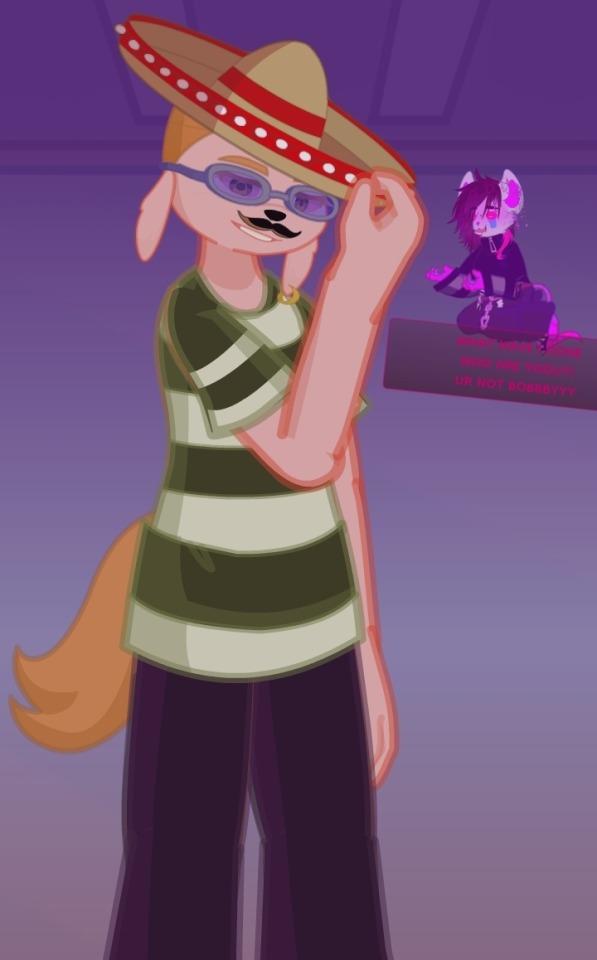
I would have searched up, like, traditional outfits for both n woulda prob tried mixing them somehow, but again I'm tired. Should had this posted at least 2ish hours ago but kept getting distracted w shi
Anyway! The second one
🔮 using magic.
I hc that Max definitely had a small obsession with up close magic throughout middle school, probably begged to go to magic camp or smthin but ended up just learning from books that Goofy got him coz he most likely didnt have the funds for camp at the time(he felt horrible abt it coz Max got super sad before getting the books to learn from). I feel like he'd still randomly do tricks when he's bored, too. Maybe he'd do some during a party to impress some of the drunks or smthin. Idk
His favorite trick to do is a card trick called "3 card monte" mostly coz it's an easy way to earn a tiny bit of pocket cash. If you don't know it, you basically bet a sum of cash n have to find which of the three cards its under. If you want a full explanation, Google.
No, like, seriously, hes probably earned at least over 200 from gullible adults n classmates in his hometown throughout middle/high school from this trick.
Would do this w that one, but since I'm only doing just 1 ss with each rn, I made him do a silly lil hat trick.

Also, small change w the gloves. He now has the spikes/studs(whatever it's called) instead. Coz ✨emo boi✨
#ask answered#character prompt#prompt#gacha life 2#gl2#maximillian goof#max goof#bobby zimmeruski#robert zimmeruski#i feel like ppl forget thats his actual name. coz it aint even a tag. it should be a tag#RESPECT THIS MANZ NAME >:[#AND MAKE IT A TAG DAMNIT#like we got max's legal name. why not bobbys#sorry. i jst love him
7 notes
·
View notes